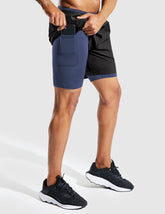Yogi's Puzzle Corner: Exploring Yoga Position Crossword Clues
"Yoga position crossword clue" likely refers to a crossword puzzle clue that is looking for a word or phrase that describes a specific yoga posture or position. Crossword puzzles often use clues to hint at the answer to a particular word or phrase, and "yoga position" could be one of those clues.
Yoga positions, also known as asanas, are physical postures that are practiced in yoga. They can range from simple stretches and twists to more advanced balancing poses and inversions. Each yoga position has a specific name and often has variations or modifications that can be made to suit different levels of flexibility and strength.
In a crossword puzzle, a clue is typically given for each word or phrase that needs to be filled in. The clue for a yoga position might be a brief description of the posture, or it might give you a hint about the name of the pose.
For example, a clue might be "yoga pose with the same name as a bird," which would be Crane Pose, or "yoga position that involves standing on one leg," which would be Tree Pose. Some clues might be more difficult and require more knowledge of yoga, such as "yoga posture that strengthens the core and arms," which could be Plank Pose, or "yoga position that involves bending backward," which could be Camel Pose or Wheel Pose.
When you're trying to solve a crossword puzzle that includes yoga positions as clues, it can be helpful to have a basic understanding of yoga postures and their names. There are many different yoga positions, each with its own benefits and variations, so it can be a fun and educational challenge to try to identify them based on the clues given in the crossword puzzle.
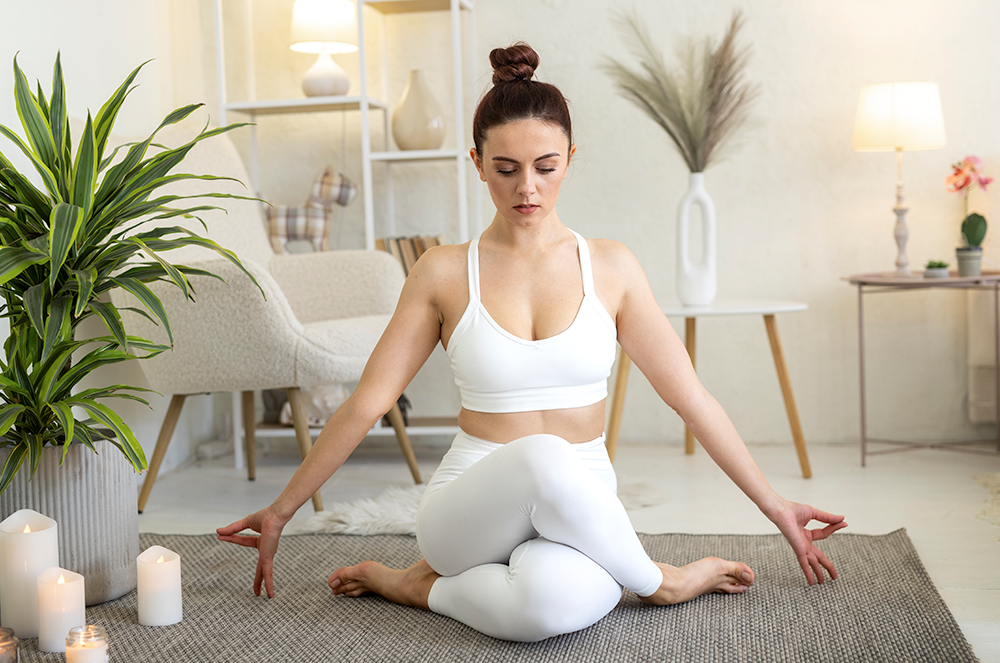
Additionally, a pair of comfortable and stretchy Yoga leggings are a must for doing yoga.
Asana: This is a general term for any yoga posture or position.
"Asana" is a Sanskrit term that refers to the physical postures or positions that are practiced in yoga. The word "asana" translates to "seat" or "pose" and refers to any position that is steady and comfortable.
There are many different types of asanas, ranging from simple seated stretches to advanced balancing poses and inversions. Each asana has its own benefits for the body, mind, and spirit. Some asanas are designed to stretch and strengthen specific muscle groups, while others are focused on improving balance, flexibility, or coordination.
Asanas are an important aspect of yoga practice, as they help to prepare the body for deeper meditation and relaxation. When practiced mindfully and with awareness, asanas can also help to cultivate a sense of presence and inner calm. In addition, many people find that regular practice of asanas can help to relieve stress and tension, improve sleep quality, and enhance overall physical health and wellbeing.
Some common yoga asanas include Downward-Facing Dog, Warrior Pose, Tree Pose, Cobra Pose, and Child's Pose. However, there are many, many more asanas to explore, each with its own unique benefits and challenges. If you're interested in practicing yoga, it's a good idea to work with a qualified teacher who can guide you through the proper alignment and modifications for each asana.
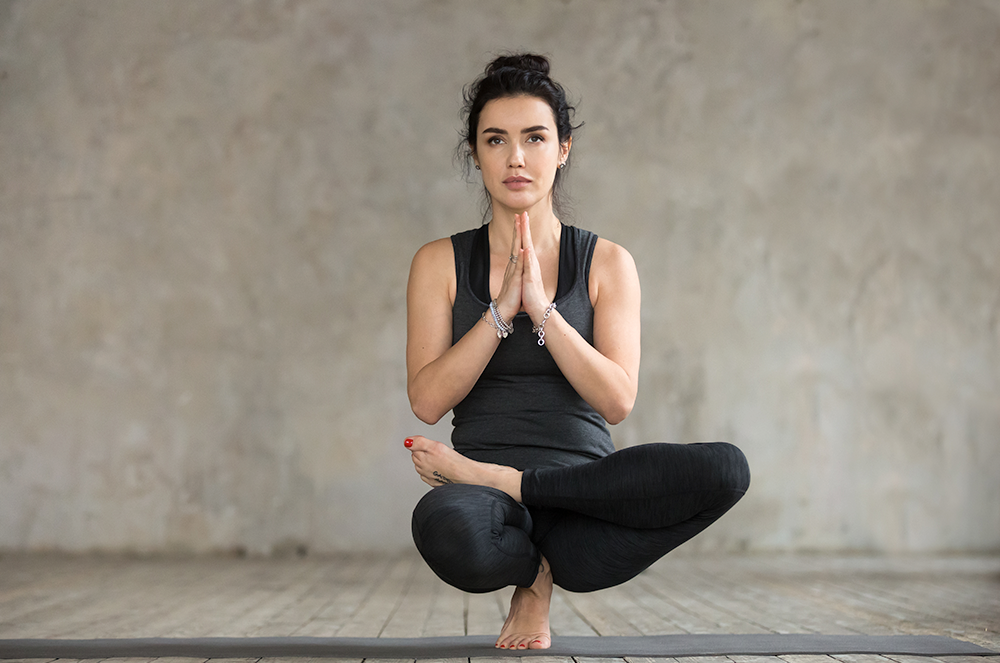
One of our top picks is this Athletic yoga muscle tank, which is made of high stretch fabric 4-way stretch fabric, soft and lightweight, allowing you a wide range of motion without any restraint.
Downward Dog: This is a popular yoga pose where you start on your hands and knees, then lift your hips up and back to create an inverted "V" shape with your body.
Downward Dog, or Adho Mukha Svanasana in Sanskrit, is a foundational yoga posture that is commonly practiced in many styles of yoga. It is often used as a transitional pose or a resting position between other poses.
To practice Downward Dog, start on your hands and knees with your wrists directly under your shoulders and your knees directly under your hips. Spread your fingers wide and press down through your palms as you lift your hips up and back toward the ceiling. Keep your knees slightly bent if necessary, and focus on lengthening through your spine and reaching your tailbone towards the sky. Your head should hang freely between your arms, and your gaze can be towards your belly or your feet.
In this pose, your body should resemble an inverted "V" shape, with your hands and feet pressing into the ground and your hips lifted up and back. Downward Dog is a great pose for stretching and strengthening the arms, shoulders, and upper back, as well as for opening up the hamstrings and calves.
There are many variations and modifications that can be made to Downward Dog to suit different levels of flexibility and strength. For example, you can practice with your hands on blocks or a chair to make the pose more accessible, or you can add variations like lifting one leg or bending one knee at a time to stretch different areas of the body.
Downward Dog is a versatile and beneficial yoga posture that can be used in a variety of sequences and practices.

Crane Pose: This is a challenging arm balance that requires strength and focus, in which the body resembles a crane in flight with the arms serving as the wings.
Crane Pose, or Bakasana in Sanskrit, is an arm balance yoga posture that requires strength, balance, and focus. In this pose, the body resembles a crane or a bird in flight, with the arms serving as the wings and the torso lifted off the ground.
To practice Crane Pose, start in a squatting position with your feet together and your knees slightly wider than your hips. Place your hands on the ground in front of you, shoulder-width apart, with your fingers spread wide. Bend your elbows and lift your hips up towards the sky, coming onto the balls of your feet. Then, slowly shift your weight forward onto your hands as you lift your feet off the ground, bringing your knees up towards your armpits. Gaze forward and engage your core to maintain balance.
In this pose, your arms should be straight and strong, and your gaze should be focused slightly forward to help with balance. You can hold the pose for a few breaths before releasing back down to the ground.
Crane Pose is a challenging pose that requires a lot of upper body strength, core strength, and balance. It can be modified by practicing with blocks under your hands, or by practicing variations like Crow Pose, which is a similar arm balance that is slightly easier to access.
Crane Pose has many benefits for the body, including strengthening the arms, shoulders, and core, improving balance and coordination, and building confidence and focus. It is a great pose to incorporate into your yoga practice if you are looking to challenge yourself both physically and mentally.
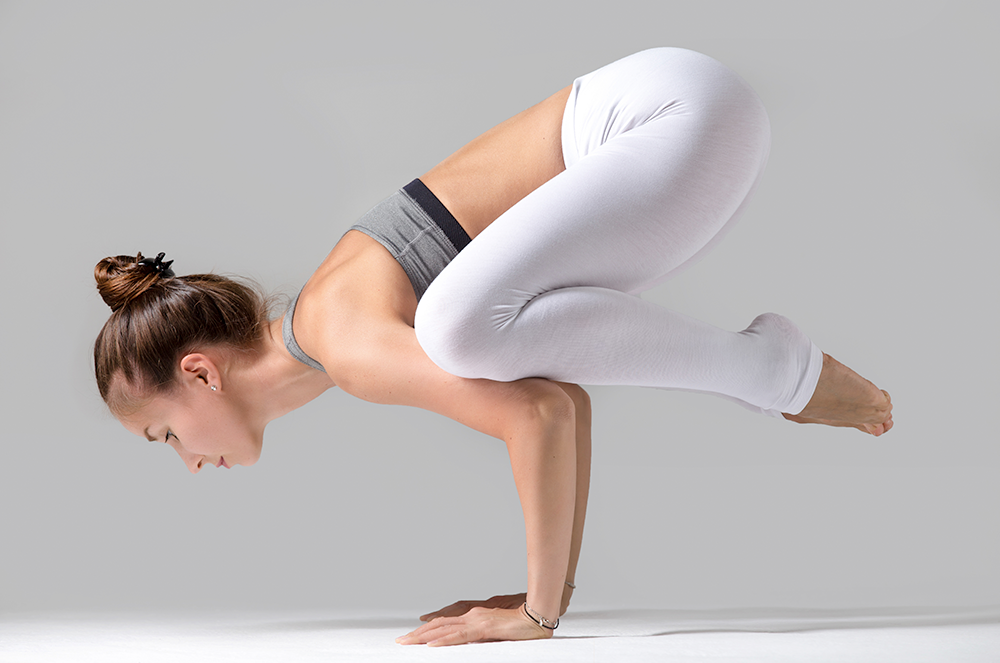
One of our recommendations is this 7/8 length high waist yoga leggings, which are made with a new lightweight buttery soft fabric. With a cropped length that hits below your calf and a flattering high-rise, 25% spandex, is more stretchy and comfortable than other brands.
Tree Pose: This is a balancing pose where you stand on one leg and place the sole of the other foot on your inner thigh or calf.
Tree Pose, or Vrksasana in Sanskrit, is a standing yoga posture that is often practiced for balance and grounding. In this pose, the body resembles a tree, with the legs serving as the roots, the torso as the trunk, and the arms as the branches.
To practice Tree Pose, start standing tall with your feet together and your arms at your sides. Shift your weight onto your left foot and bring your right foot to rest against your left inner thigh or calf, avoiding placing it directly on the knee joint. Once you've found your balance, bring your hands together at your heart center in a prayer position or reach them up towards the sky like branches. Focus on rooting down through your standing foot and lifting up through the crown of your head.
In this pose, your body should be tall and strong, with your gaze focused slightly forward. Tree Pose is a great posture for improving balance and stability, as well as for opening up the hips and strengthening the legs and feet.
There are many variations and modifications that can be made to Tree Pose to suit different levels of flexibility and strength. For example, you can practice with your hands on your hips or at your sides if reaching up is too challenging, or you can use a wall or chair for support if balance is difficult.
Overall, Tree Pose is a versatile and beneficial yoga posture that can be used in a variety of sequences and practices to help cultivate balance, strength, and focus.
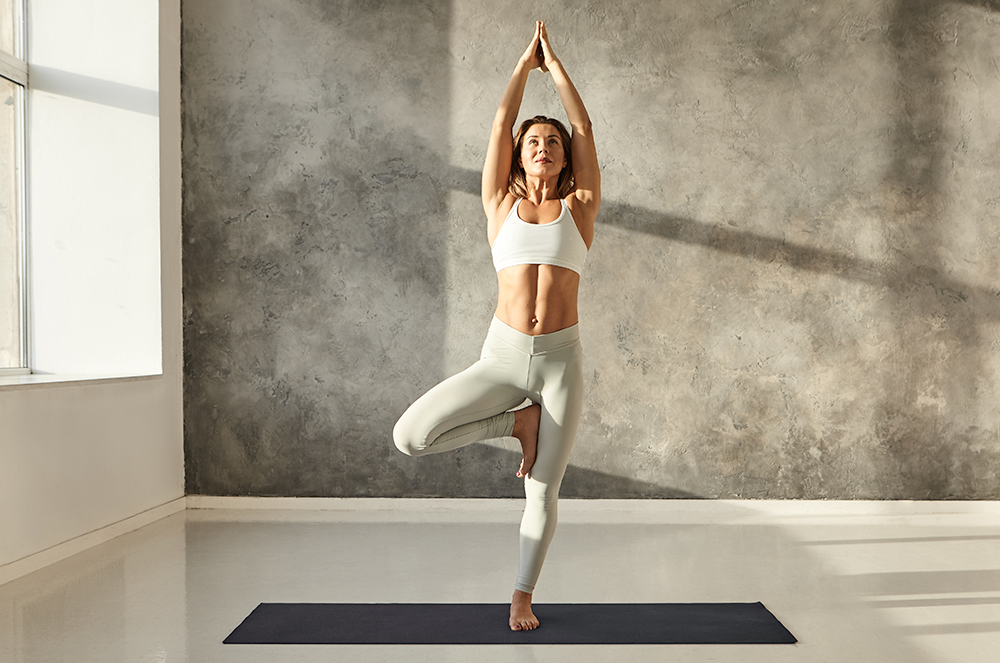
One of our favorites is this ultra soft T-shirt with crew neck, which is featured with simple and classic but high-quality design and made of ultra-soft and breathable fabric, providing you the best wearing experience.
Warrior Pose: This is a series of standing poses that help build strength and stability. There are several variations of warrior pose, including Warrior I, Warrior II, and Warrior III.
Warrior Pose, or Virabhadrasana in Sanskrit, is a family of standing yoga postures that are named after the fierce warrior Virabhadra from Hindu mythology. There are three main variations of Warrior Pose: Warrior I, Warrior II, and Warrior III.
Warrior I Pose:
To practice Warrior I Pose, start in a standing position at the front of your mat, with your feet hip-width apart. Step your left foot back about three to four feet and turn it out slightly, then bend your right knee so that it is directly above your ankle. Lift your arms up towards the sky, bringing your palms together if you can. Gaze up towards your hands and hold for a few breaths before repeating on the other side.
Warrior II Pose:
To practice Warrior II Pose, start in a standing position at the front of your mat, with your feet hip-width apart. Step your left foot back about four to five feet and turn it out to a 90-degree angle, so that your heel is in line with your right arch. Bend your right knee so that it is directly above your ankle, and stretch your arms out to the sides at shoulder height. Gaze out over your right fingertips and hold for a few breaths before repeating on the other side.
Warrior III Pose:
To practice Warrior III Pose, start in Warrior I Pose with your right foot forward. Slowly shift your weight forward onto your right foot, lifting your left leg up behind you and extending your arms forward. Keep your torso parallel to the ground and your gaze down towards your mat. Hold for a few breaths before repeating on the other side.
Warrior Pose is a great family of postures for building strength and stability in the legs, hips, and core, as well as for improving focus and balance. It is a popular pose in many yoga sequences and practices and can be modified or varied to suit different levels of experience and ability.

Lotus Pose: This is a seated pose where you cross your legs and place each foot on the opposite thigh. It's often used for meditation.
Lotus Pose, or Padmasana in Sanskrit, is a seated yoga posture that is often associated with meditation and spiritual practice. In this pose, the legs are crossed and the feet are placed on the opposite thighs, with the hands resting on the knees or in a mudra.
To practice Lotus Pose, sit on the ground with your legs extended in front of you. Bend your right knee and place your right foot on top of your left thigh, then bend your left knee and place your left foot on top of your right thigh. Bring your hands into a mudra, such as the chin mudra, the jnana mudra, or the anjali mudra, or simply rest them on your knees.
In this pose, your spine should be straight and your gaze focused inward, with the crown of your head reaching towards the sky. Lotus Pose is a great posture for improving flexibility and mobility in the hips and knees, as well as for promoting a sense of calm and tranquility in the mind.
It's important to note that Lotus Pose can be challenging for some people, particularly those with tight hips or knee injuries. If you experience discomfort or pain in the pose, it's best to modify or skip it altogether. There are many other seated postures, such as Easy Pose or Seated Forward Fold, that can offer similar benefits without putting as much strain on the knees and hips.
Lotus Pose is a traditional and revered yoga posture that has been practiced for centuries, and can be a valuable addition to any yoga practice or meditation practice.
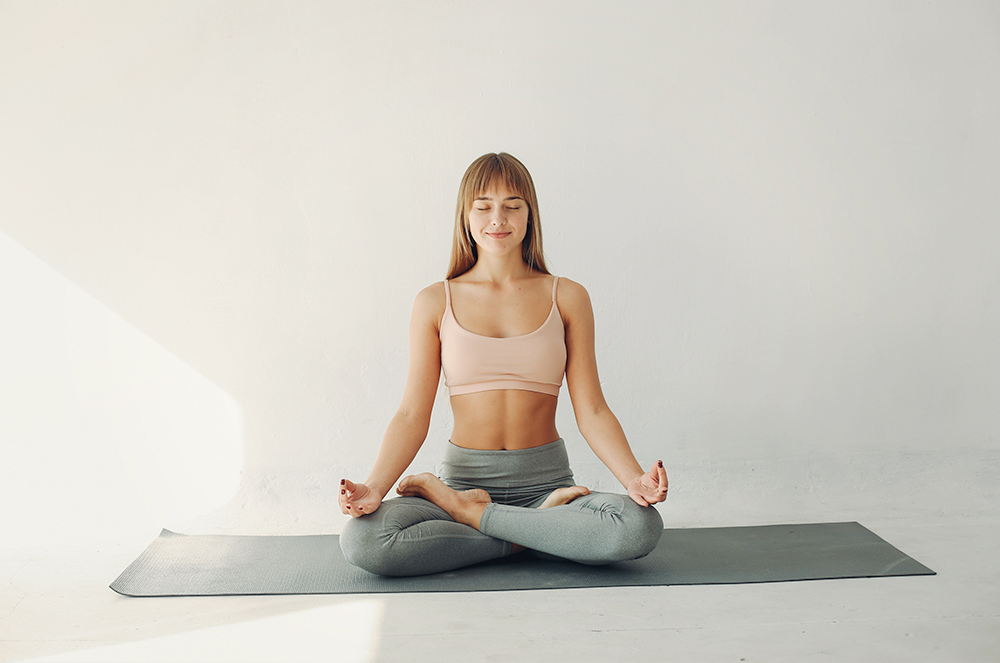
Are you tired of struggling to find the perfect yoga outfit? Look no further than the MIER yoga bottoms! Our yoga clothing is designed to provide comfort and support, so you can focus on your practice and not on your clothes.
Check out the MIER yoga tops today and find the perfect pieces to enhance your practice.
From tops to bottoms, we've got you covered.
